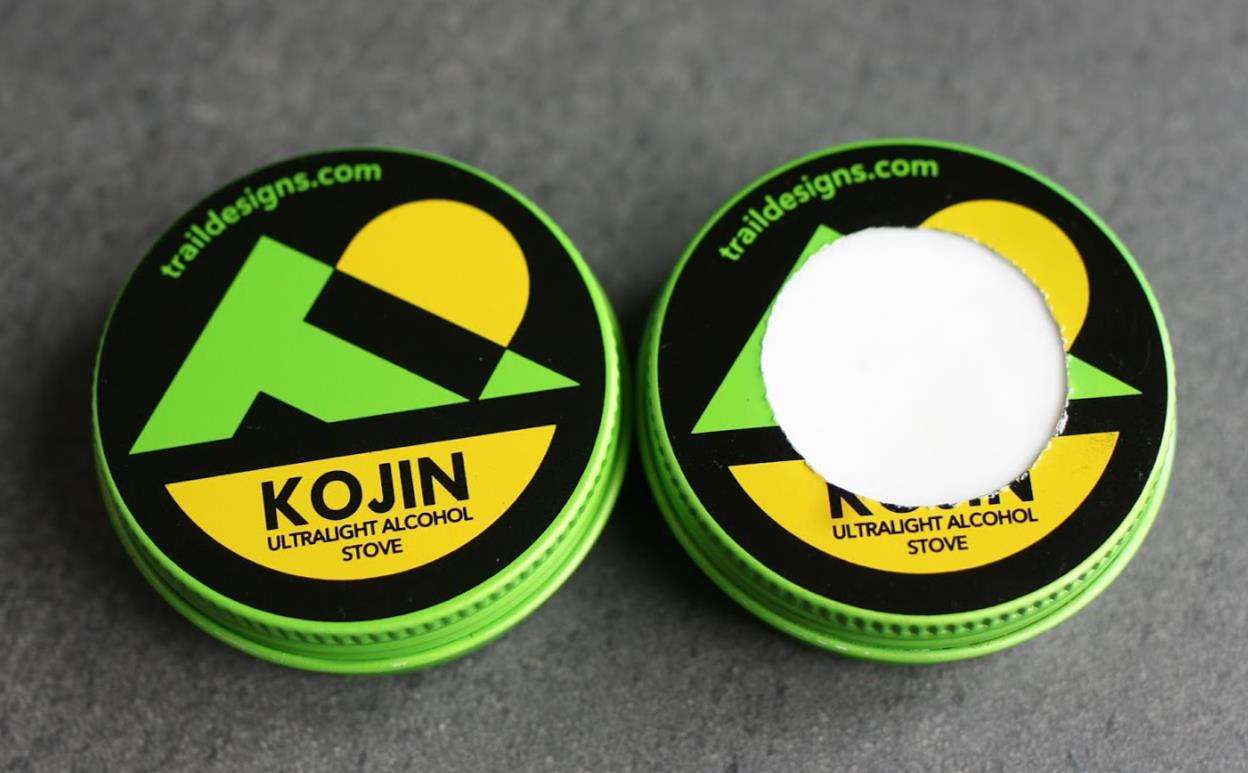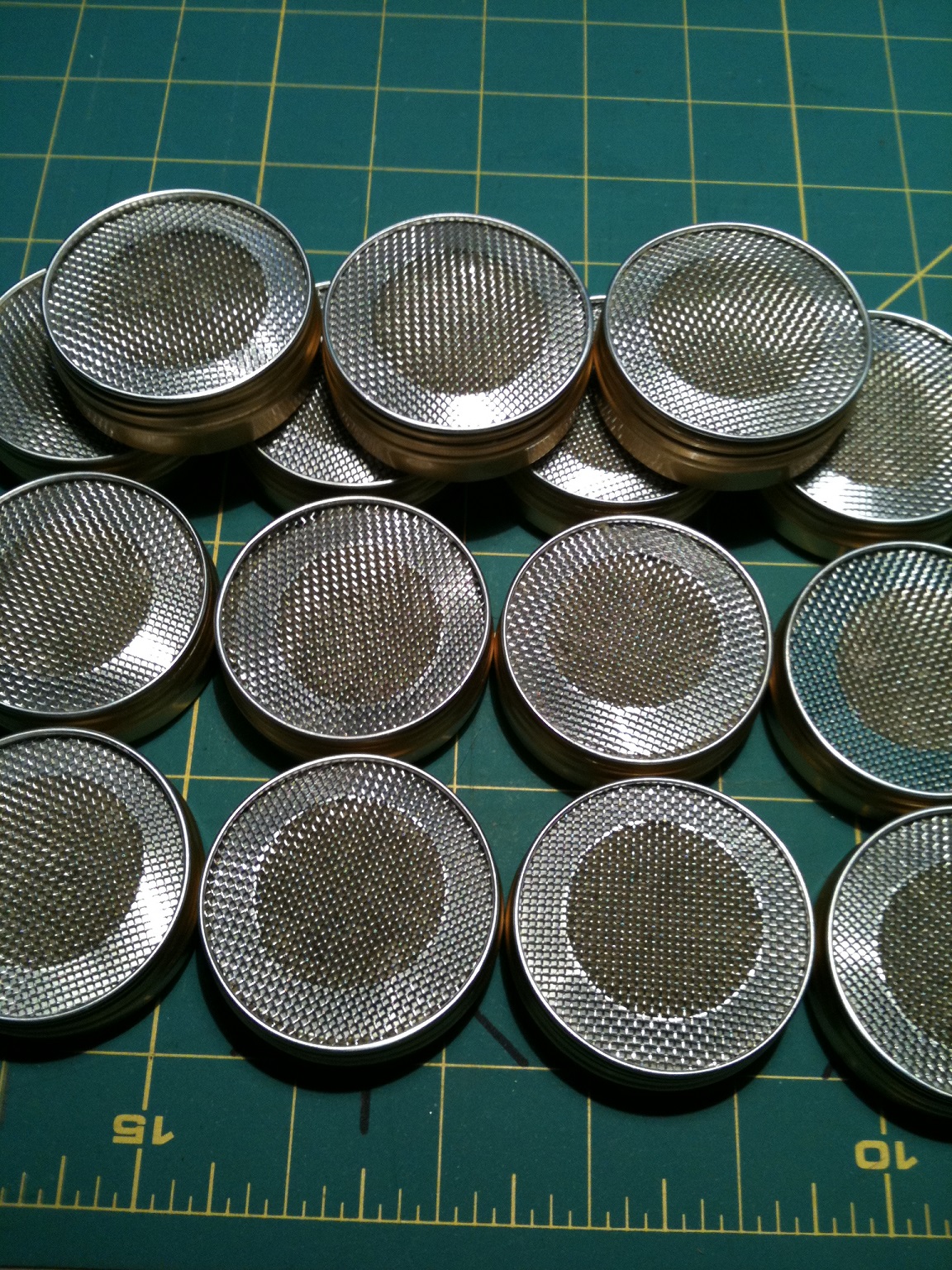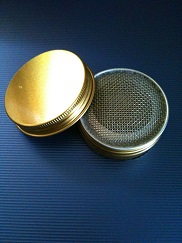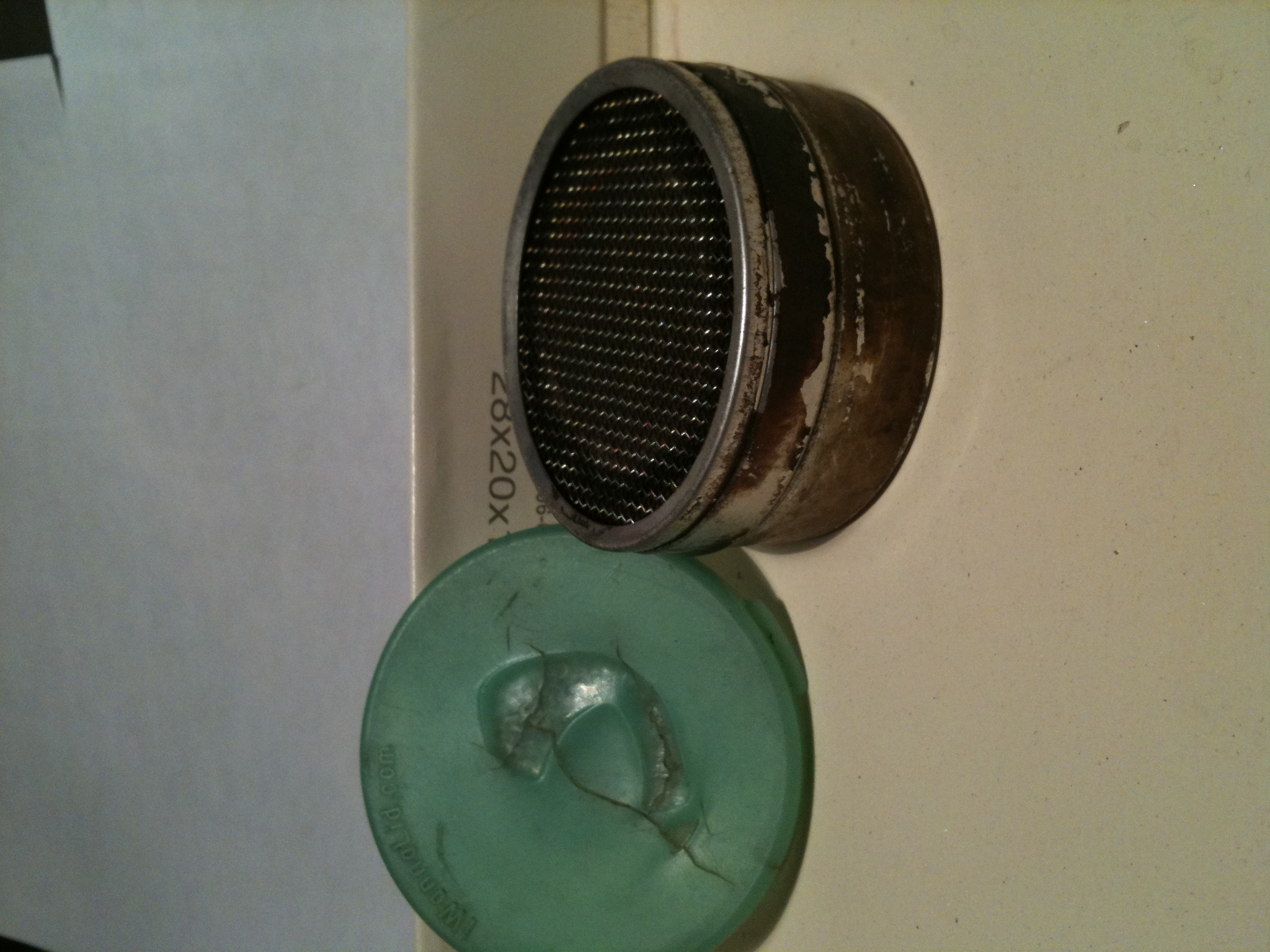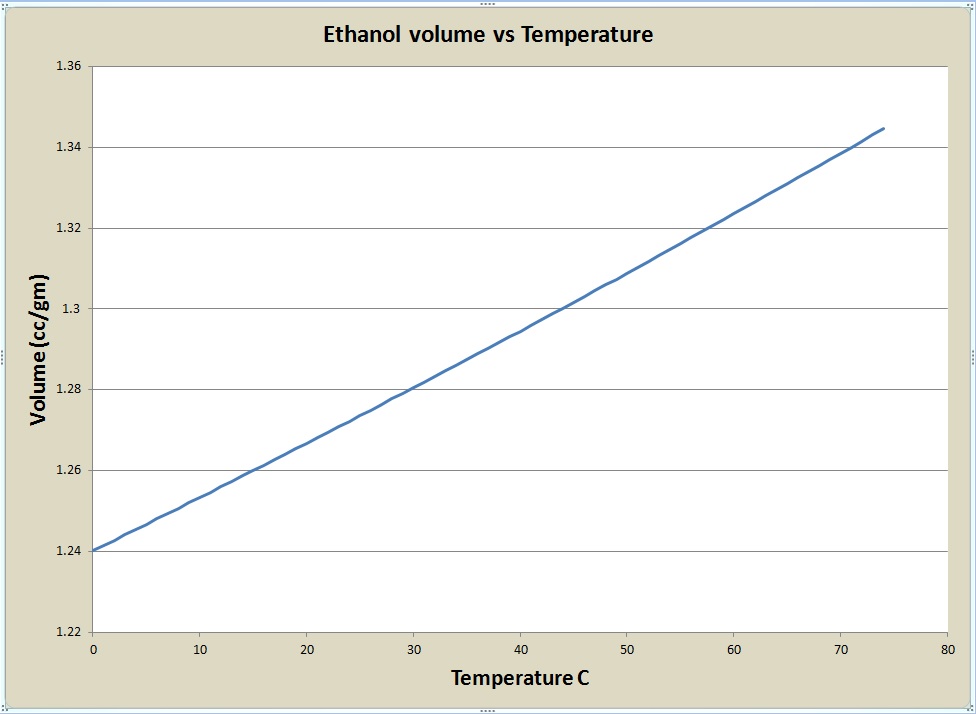Topic
Efficiency tests of Trail Designs Kojin & 12-10, Starlyte and Toaks Siphon
Forum Posting
A Membership is required to post in the forums. Login or become a member to post in the member forums!
Home › Forums › Gear Forums › Gear (General) › Efficiency tests of Trail Designs Kojin & 12-10, Starlyte and Toaks Siphon
- This topic has 25 replies, 8 voices, and was last updated 6 years, 7 months ago by
 DAN-Y.
DAN-Y.
-
AuthorPosts
-
Mar 7, 2018 at 10:04 pm #3522975
<span style=”font-weight: 400;”>Efficiency tests of four alcohol stoves (Trail Designs Kojin & 12-10, Zelph Starlyte mod. and Toaks Siphon) in a Trail Designs Classic Ti-Tri caldera cone with the 400ml Evernew companion cup</span>
A bunch of alcohol stoves four of which are included in this test/thread.

The modified Trail Designs Kojin Stove (Highly inspired by Zelph’s Starlyte stove). A 35mm disk was cut out of the Kojin’s lid. This is same diameter opening as the Starlyte.

Below is a photo showing the modded stove next to the un-modded. The modded stove basically has a reduced output function (similar output to the Starlyte) but can still work like the original Kojin stove – Just screw of the lid. The silicon disk can be popped in and out while it still seals in the stored alcohol.



My simple equipment and setup:
All test were done in a Trail Designs Classic Ti-Tri Caldera Cone with the Evernew companion cup (diameter of 96mm excluding the lip). Most stove or stove systems responds with faster boil times and increasing efficiency when pot diameter increases. Unfortunately, I do only have one caldera cone to base these tests on.

The test are primarily based on the theoretical minimum consumption using a more precise laboratory syringe. Weight-based fuel consumption measurements has generally been avoided since the typical household kitchen scale, like mine, is imprecise. But the weight-based approach is far more convenient with wick-type alcohol stoves (e.g. Starlyte and Kojin), since their output decreases when there is 3-5g of fuel left.
The boil tests are primarily done indoors starting with a water temperature of either 8C or 20C – tempering water prior to the test is the most boring part ;) The lower 8C temperature is chosen since its the coldest my tap water goes and 20C is chosen since others testers often has used that. Using colder water (and a larger water volume) gives better accuracy in tests since more fuel is used which is easier to measure precisely. Some tests are done outside and in my shed – watch for wind and air temp in the boil test table further down.
All indoor tests was done under a exhaust hood which generates a very mild air flow.

The simple testing equipment.

Theoretical minimum consumption idea
If you have a stove with a constant output that has a total burn time of 12 minutes on 30ml ethanol and boils 500 ml in 6 minutes – The minimum consumption can then be estimated to be to be 30ml of ethanol per liter boiled water.
This simple approach can be used to better estimate the actual fuel consumption when you add slightly to much fuel in boil tests. Since this approach only works with a constant output the total burn time has to measured from ignition until flames/jets starts to dive down. This do not work great with all stoves.
Weights and measurements of burners:
Weight Diameter Height
Starlyte mod.+ lid 17g 56mm 25mm
TD 12-10 stove: 15g 82mm 40mm
TD Kojin + lid: 16g 62mm 22mm
TD Kojin mod. +lid: 16g 62mm 22mm
Toaks Siphon 23g 40mm 54mm
(Wierd note: I finally got the name of the 12-10 stove ! Its because it has 12 outer holes and 10 inner holes. That name must relate back to the development phase of the stove)
Table nr. 1 of boil tests in the Ti-Tri Classic cone (Evernew companion cup version): Indoor tests are indicated by no wind (0 m/s). Boil times are given in minutes and seconds each in the column under “Boil time”. “Fuel consumpt.” shows the amount of fuel added or in the case of weight-based measurements the actual consumed fuel. Afterburn is the extra boil time after the water has boiled.

Table nr. 2 of boil tests using a Toaks wire stand (reduced height to 65mm) with variable pot-burner distance (PBD) depending on burner height. Toaks Siphon has an optimal PBD of ~25mm. I have not tested the optimal burner distance on the other stoves.

Some discussion points
Extra tests of the Siphon are included in the above table 2. The purpose was to test the repeatability of my setup/method. The repeated measurements with different amounts of fuel additions with the same cooking system also indicates that the theoretical minimum consumption approach is not far off.
The siphon generally performs well in both fast boil times and good efficiency. In a simultaneous cold-weather outdoor test VS the Ti-Tri Classic using pots with the same diameter, the Siphon stove (w/ Whitebox stove windscreen) performed a tiny bit better than the caldera (see the two last rows in table 2. The Siphon is showing quite good efficiency on small diameter pots and also in tests that was not included in the thread.
The modded Kojin stove performs very similar to the Starlyte without a caldera cone. With a caldera cone the Starlyte is slightly superior both in boil time and efficiency. The Starlyte (mod./cone version) has so far been the most efficient stove overall but its a close race. The modded Kojin has the advantage of two outputs while still be able to store the remaining alcohol.
Efficiency of the Kojin stove without a caldera cone is quite variable compared to all my tests. The flames are all over the place. Its very likely that the efficiency will be much better in a caldera cone where the flames are concentrated into the bottom of the pot. Especially in larger diameter pots.
Generally, all burnershas their advantage either in a cone, compatability with multible pots, cold-weather advantages etc. and some aspects remains to be tested, like how the burners perform in cones with larger diameter pots.
I hope these tests are useful to you guys. Some of this was a terrible read, I know, but I gave the details in this thread to refer back to in future threads/tests :)
Mar 8, 2018 at 12:38 pm #3523091The spreadsheets below are updated with Ben’s efficiency calculations
Table nr 1

Table nr 2

The two grey columns is my simple method and Ben’s method for estimating fuel consumption for boiling 1 liter of water. They are suprisingly similar, but I am not fully sure about Ben’s calculation. The calculations are likely similar.
Mar 9, 2018 at 12:21 am #3523273Nice job!
To me, the big takeaway seems to be that the Kojin stove efficiency can be improved (for smaller diameter mugs) by reducing the opening orifice size to be on par with the StarLyte. If that correct?
After reading a bit about the Kojin, it seems to be targeted at the Sidewinder family of windscreens which tend to be bigger volume pots like the 900 & 1300 ml pots. With those sizes, efficiency of the unaltered stove might go up. Additionally, alteration may increase the efficiency but at the sacrifice of time to boil and on larger pot sizes, this might not be the best tradeoff for those users.
Finally, it seems to me that a strategic advantage of the Kojin stove is the ability to hold a larger amount of fuel needed for the bigger pots. Stoves are optimized for different reasons, and I suspect some using a 2 liter pot would not select a StarLyte or a Siphon stove.
And as a last note, I am very suspect of things like projected time to boil 1 liter. In particular, my experience with wick stoves is that the heat output is highly non linear. To make the even more relevant, I would rather see say 15 ml for 500 ml of water added to the stove and see the real boil time as the last 25% of the alcohol is consumed. Yes, I know that you can snuff it out and save the last bits, but if some says that it can boil 500 ml using 15 ml, the real prove is adding just that amount and clocking the time to boil. Very opinionated, I understand but my 2 cents.
Mar 9, 2018 at 6:43 am #3523340Thanks a lot for doing this. Great stuff. Would be nice to have a regular Starlyte in the test as well. Clever idea with the mod’d Kojin. I’d be a bit hesitant storing fuel like that for longer durations, but it might be fine. I worry that as the stove ages and the wicking material packs down, that it won’t seal anymore, which would be a big loss IMO.
Jun 26, 2018 at 4:10 pm #3543880I just had the Kojin out on two trips, using a 650 Toaks pot and Caldera-style cone. On both trips, the Kojin burned out without fully bringing my water to a boil. I was not at elevation, there was wind two times but not the third, and water was fresh out of the creek, so pretty cold. I usually use a modified Starlyte with this set-up, which it was designed for. I like the screw-top of the Kojin and lack of glue in construction, but I think I prefer the Starlyte overall, for its ability to absorb the fuel more quickly and the lip effect which is harder to spill fuel from. The modification of the Kojin lid is cool, but having a hole in the lid seems like it would be easier to spill fuel out of. I’ve seen what looks like a little fuel behind the silicone seal on my Kojin, looks like liquid behind it. However, with the Starlyte, I’ve had a couple have the glue fail after prolonged contact with the alcohol fuel. Doesn’t make the stove fail, but it is annoying to have to keep replacing the top. I also find the modified Starlyte easier to blow out.
I’m guessing the difference between the two stoves is due to stove height, and also diameter? I can’t see how the wicking material would change the performance much. The perfect stove would seem to be a stove with a screen top and narrowed aperture, but a screw-top lid.
Jun 26, 2018 at 9:36 pm #3543917The Starlyte Gold has the screw top and stainless steel screen.
http://www.woodgaz-stove.com/starlyte-gold.php
If someone wants a modified one, send me a PM and I’ll be glad to make one for you.
Jun 27, 2018 at 2:07 am #3543963Looks like the height of the Starlyte Gold is lower than the regular Starlyte, which is nice. Good looking stove.
Jun 27, 2018 at 2:17 am #3543970“If someone wants a modified one, send me a PM and I’ll be glad to make one for you.”
Dan – Can you make a Simmerlite with a screw top?
Jun 28, 2018 at 1:43 pm #3544238I made a few with the reducer underneath the stainless steel mesh. I’ll test one today to observe how it burns and post with results and then make them available.

Looks like the height of the Starlyte Gold is lower than the regular Starlyte, which is nice. Good looking stove.
Thanks Dan, yes, the Gold is shorter, perfect for a Toaks Light 550 kit. You are the one that inspired the weight reduction in kits that has brought us to this point. It keeps getting better. If only TD would have had patience and let me resolve the problem with the top coming off the regular Starlyte being used in their larger cones. I have a new burner design(no seams) in the works that holds 2 ounces of fuel for the larger pots under the cone systems.
Jun 29, 2018 at 3:13 am #3544409“I made a few with the reducer underneath the stainless steel mesh. I’ll test one today to observe how it burns and post with results and then make them available.”
Standing by.
Jun 29, 2018 at 8:28 pm #3544497Tests went well, will list them tomorrow.
Jun 30, 2018 at 12:06 pm #3544593Ooo, I’m liking those…
Jun 30, 2018 at 4:06 pm #3544603Here is what it looks like a little/lot closer:
 Jun 30, 2018 at 4:28 pm #3544609
Jun 30, 2018 at 4:28 pm #3544609Funny how these posts always turn int a sales pitch.
Jul 1, 2018 at 1:24 am #3544656With a caldera cone the Starlyte is slightly superior both in boil time and efficiency. The Starlyte (mod./cone version) has so far been the most efficient stove overall but its a close race. The modded Kojin has the advantage of two outputs while still be able to store the remaining alcohol.
Your comment is what inspired me to modify the Starlyte Gold.
Good to see the Starlyte (mod./cone version) has so far been the most efficient stove overall.
Your charts are very impressive. Excellent comparisons. Thank you!
Jul 1, 2018 at 10:07 pm #3544761“Tests went well, will list them tomorrow.”
Ordered one yesterday. Thanks for the heads up. The screw top should resolve the major drawback of the modified Starlyte.
Jul 3, 2018 at 12:15 am #3544954The problem was “over filling” . If you over fill the ones with a screw on lid and light it, the burner will eventually become annealed and cause the lid to not fit properly onto the threads of the bottom.
Jul 3, 2018 at 1:02 am #3544955I don’t get it. Can you explain how “over filling” causes it it to anneal the lid while “regular” filling does not? If the flame profile between “over filling” and “regular” different? Just curious.
Jul 3, 2018 at 1:38 am #3544964If the burner is filled to the top and some gets onto the side and lit the heat causes the fuel to expand and go over the side of the burner and ignite. The burner gets engulfed in flames all around it. It gets torched, baked whatever you want to call it. Trail Designs sold the burners to everyone no matter what size pot and cone they were using. They filled the burners to over flowing. The annealing occurs to the sidewall of the base. The base has threads. The lid has threads. The aluminum is soft to begin with. More heating, baking, torching makes it softer. It’s going to make it a lot easier to cross the threads. Hope this makes sense to you Yon. Heat causes alcohol to expand rapidly. I thought you would be the first to know that. If the burner is filled to the rim and heat is applied it will overflow.
Jul 3, 2018 at 2:09 am #3544966Photo of burner that was repeatedly filled to overflowing and torched by a customer causing the aluminum lid to come off:

And the lid was used to snuff it out
 Jul 3, 2018 at 2:14 am #3544969
Jul 3, 2018 at 2:14 am #3544969Dan, (try using a spell checker before emailing ;-) )
Heat causes alcohol to expand rapidly. I thought you would be the first to know that. If the burner is filled to the rim and heat is applied it will overflow.
Just to clarify your remarks a bit. Are you saying that alcohol in a wick based stove expands when heated? I don’t use wicks so I don’t know, alcohol in an open stove doesn’t really expand: warmer – yes, expand – no. My 2 cents.
Jul 3, 2018 at 2:32 am #3544972Watch the video:
 Jul 3, 2018 at 2:35 am #3544973
Jul 3, 2018 at 2:35 am #3544973Another one:
 Jul 3, 2018 at 2:39 am #3544975
Jul 3, 2018 at 2:39 am #35449753 is sufficient to show that alcohol expands when heated:
Jul 3, 2018 at 3:11 am #3544981From Wikipedia, you can get the formula for ethanol density as a function of temperature. You can get an understanding of the volume sensitivity by inverting the density (cc/gram). This is a chart of the volumemetric change of ethanol over temperature. From 25 C to 74 C to volume change is about 5.5% (with the boiling point of pure ethanol at ~78 c). A 5.5% volumemetric change is pretty small, I suspect if overfilling is a problem then it is more likely to be due less to alcohol expansion and more due to capillary forces and temperature interaction. My 2 cent (Jon)

-
AuthorPosts
- You must be logged in to reply to this topic.
Forum Posting
A Membership is required to post in the forums. Login or become a member to post in the member forums!
HAPPENING RIGHT NOW (February 11-21, 2025) - Shop Hyperlite Mountain Gear's Biggest Sale of the Year:
Our Community Posts are Moderated
Backpacking Light community posts are moderated and here to foster helpful and positive discussions about lightweight backpacking. Please be mindful of our values and boundaries and review our Community Guidelines prior to posting.
Get the Newsletter
Gear Research & Discovery Tools
- Browse our curated Gear Shop
- See the latest Gear Deals and Sales
- Our Recommendations
- Search for Gear on Sale with the Gear Finder
- Used Gear Swap
- Member Gear Reviews and BPL Gear Review Articles
- Browse by Gear Type or Brand.



